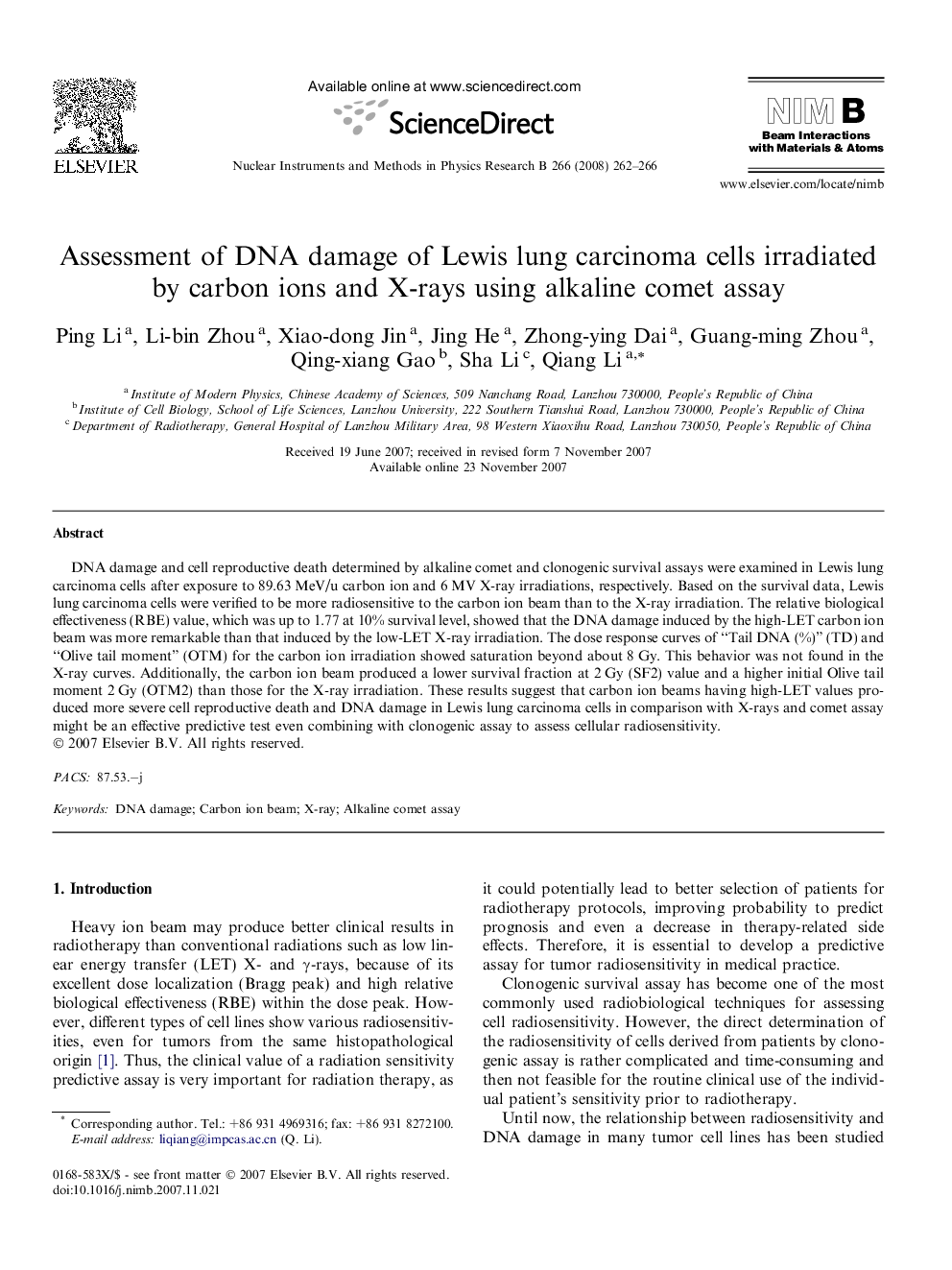| کد مقاله | کد نشریه | سال انتشار | مقاله انگلیسی | نسخه تمام متن |
|---|---|---|---|---|
| 1685399 | 1010557 | 2008 | 5 صفحه PDF | دانلود رایگان |

DNA damage and cell reproductive death determined by alkaline comet and clonogenic survival assays were examined in Lewis lung carcinoma cells after exposure to 89.63 MeV/u carbon ion and 6 MV X-ray irradiations, respectively. Based on the survival data, Lewis lung carcinoma cells were verified to be more radiosensitive to the carbon ion beam than to the X-ray irradiation. The relative biological effectiveness (RBE) value, which was up to 1.77 at 10% survival level, showed that the DNA damage induced by the high-LET carbon ion beam was more remarkable than that induced by the low-LET X-ray irradiation. The dose response curves of “Tail DNA (%)” (TD) and “Olive tail moment” (OTM) for the carbon ion irradiation showed saturation beyond about 8 Gy. This behavior was not found in the X-ray curves. Additionally, the carbon ion beam produced a lower survival fraction at 2 Gy (SF2) value and a higher initial Olive tail moment 2 Gy (OTM2) than those for the X-ray irradiation. These results suggest that carbon ion beams having high-LET values produced more severe cell reproductive death and DNA damage in Lewis lung carcinoma cells in comparison with X-rays and comet assay might be an effective predictive test even combining with clonogenic assay to assess cellular radiosensitivity.
Journal: Nuclear Instruments and Methods in Physics Research Section B: Beam Interactions with Materials and Atoms - Volume 266, Issue 2, January 2008, Pages 262–266